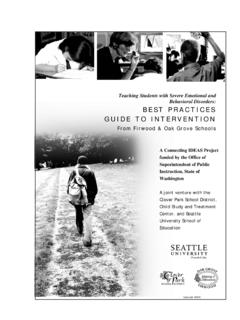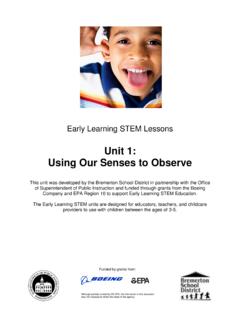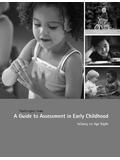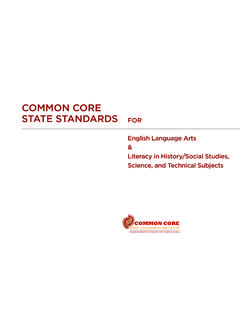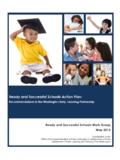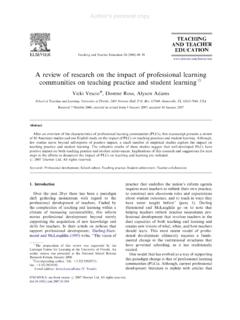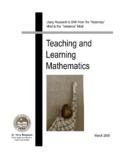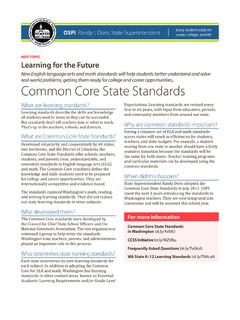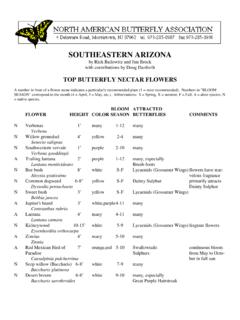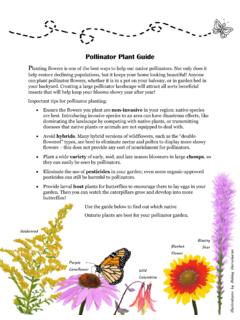Transcription of Early Learning STEM Lessons Unit 4: Discovering …
1 Early Learning stem Lessons unit 4: Discovering plants and Animals This unit was developed by the Bremerton School District in partnership with the Office of Superintendent of Public Instruction and funded through grants from the Boeing Company and EPA Region 10 to support Early Learning stem Education. The Early Learning stem units are designed for educators, teachers, and childcare providers to use with children between the ages of 3-5. Funded by grants from Although partially funded by US EPA, the information in this document may not necessarily reflect the views of the agency. Objectives Children will discuss and explore living things and their habitats, living vs. non- living entities and the cycles of change in nature (life cycles and/or seasons). Children will use sorting and reasoning in their recording. Children will use their senses to make observations about materials and the environment. They will compare and contrast those observations.
2 Common Misconceptions Only furry things are animals. Some children have a limited view of what an animal is. They often think only farm animals or pets are animals, or only creatures that are warm and furry are animals. Alternately children may think that insects, spiders, fish, and humans are not animals. plants are not alive. Children may believe that because plants cannot move independently, do not have a mouth or nose, that they cannot be alive. If something is in the dirt, it is alive. Children may overgeneralize the concept of plants being alive and extend it to nonliving objects such as rocks because they exist in the dirt. Bugs/dirt/snakes/mud/etc. are scary. While not technically a misconception, children can pick up on the fears and insecurities of the adults around them and perpetuate those thoughts. Take care to hide any fears about certain animals or environmental elements as children may overgeneralize and/or develop a fear.
3 Target Books Nonfiction (informational text): Planting A Rainbow by Lois Ehlert o A child tells a story of planting a rainbow, selecting different types of plants and flowers to represent the different colors. Descriptions of bulbs, seeds, seedlings, and plant starts demonstrate the various beginnings of plants . Fiction: In the Tall, Tall Grass by Denise Fleming o Expressive vocabulary is used to describe animals that a little boy finds while exploring in tall grass. Rhyming text briefly describes actions, sounds, and sights that are exhibited by the critters and surroundings. Key Vocabulary Living something that eats, grows, and produces offspring. Non-living an inanimate object; something that never was or will be alive. Life cycle a series of stages through which a living thing passes from the beginning of its life until its death. Habitat The natural home/environment of an organism; where something alive lives, eats, and travels.
4 Nature/Environment outdoors; where an organism or plant lives. Garden where people grow plants ; might include vegetables and fruits for us to eat. Record to draw or write about what you see, touch, smell, hear, and feel. Observation - to pay attention to something and record it. unit 4 Discovering plants and Animals 10/ 2013 2. Pre/Post Assessment Ideas Using the pictures provided or finding your own, show children pictures that include things which are alive and not alive. Ask them to sort based on living and not living. Ask if a plant is living or nonliving. If they are living, what do they need to grow? How do they grow? What do animals need to live? Show picture of different types of animals. Ask about where they live, why, and how they get their needs met. Before Reading Introduce key vocabulary. Take a picture walk'. Look through the pages and talk about what they see and think the story may be about. When appropriate, have children make predictions about what they think may be happening on a page.
5 Record predictions that children make during their picture walk. Record what children already know about the topic. A circle map can be an excellent recording tool - examples are at the end of the unit . During Reading Make comments about personal connections, either between you and the story or the children and the story. Ask questions that are: o On the page - basic level questions that have yes/no answers or can be answered by looking at the page. o Between the lines - a higher level of questioning that requires children to recall information they have already heard or information they are hearing right now in order to answer. o Beyond the book - an advanced level of questioning that requires children to take information they have previously heard and make reasonable predictions based on that known information. A bookmark of key vocabulary and a variety of types of questions specific to each book is included with the unit .
6 It is recommended that you print the bookmark and keep it with your book copy to serve as a reference guide when engaging with the book with young children. Book Extension Plant a garden (you can use pots and planters inside if no outdoor space available). o Help children draw the outline of the garden plot or the shape of the planters. o Have pictures of a selection of plants , both ones that are feasible and not feasible for planting in your area. With each picture, include a basic description of the type of environment and space that will be needed. Some samples are included at the end of the lesson . o Let the children explore the different pictures of the plants and their needs, teaching them how to decode the symbols of the type of environment and space needed for each. unit 4 Discovering plants and Animals 10/ 2013 3. o The children should work together to select the plants they feel would work best for their garden or planters.
7 Help children develop rationalizations for their selections and decisions to exclude plants . For example, if planting an indoor garden, one of the pictures might be of an apple tree. The mature size of the tree would not be possible to maintain in an indoor planter box. o Use unifix cubes, links, string, or other nonstandard units of measurement to measure how deep the seeds should be planted and how close together. o Help children make labels for the different seeds/ plants they selected. Popsicle sticks or wooden paint stirrers from the hardware store make great inexpensive markers. Children can copy or trace the word onto the wood and draw a picture of the mature plant or the fruit/vegetable. Discussion Points When planning the garden with the children ask what a plant needs and how they can ensure the plant receives it. When planting ask them to use their senses;. what does the dirt feel like, etc. and to predict outcomes ( , when we might see sprouts)?
8 When harvesting ask them what does the plant look, feel, smell, taste (when appropriate) like. When flowers are available you could dissect one of them to look at the different parts and speculate what they might do. Which part might attract bees and why? When planting, why do the seeds need to go in the ground? Why do some seeds need to be planted deeper than others? Why do seeds need to be planted far apart? Discuss the sizes of seeds. Do small seeds become small plants and big seeds become big plants ? Additional Activities Small/Large Group Activities: Make a classroom book: o Use child drawn pictures of their process for gardening and their observations for the Nature Walk. How things grow and change (Life cycles): o Have pictures of animals and plants that change over time for each stage. If possible, grow them in your classroom. Butterflies or tadpoles are some examples for animals. Make observations about plants such as counting the rings inside a tree trunk to determine tree age or how leafy trees shed leaves.
9 Living and nonliving-picture/object sort, characteristics of living things: o Have children sort through various pictures of things that are alive ( plants and animals), and non-living things (plastics, rocks, dirt, sun, moon, water, fire, etc.). Note: You might add things that were alive at one time (wooden table, foods we eat, paper, etc.) especially if you have talked about life cycles and do not find the subject morbid. Sprouts: Add bean sprouts to baggies or grow different plants in a Rootvue to watch their roots grow. unit 4 Discovering plants and Animals 10/ 2013 4. Picking sensory plants : soft touch mosses, aromatic herbs like mint or rosemary, colorful flowers of different sizes and shapes (include bold flowers that could be taken apart to look for different parts of a flower; petal, stamen, pistil, and sepal), and veggies that could be eaten later in a nutritional activity. Plant variety: Plant many of the same type of plant and grow them in different environments.
10 Predict, measure, and chart: light/dark, varying degrees of water, different types of soil. Native Walk: Taking clipboards (cardboard with rubber bands are inexpensive to make and replace) outside on a walk, draw pictures of what you see that is alive, where their habitat is, and what they eat if you can (some might be speculation or based on previous knowledge). Dig in the dirt: Take a trowel, dig into the dirt, and make the above observations. Post word and pictures: Write words for the children underneath their pictures and post them in the classroom possibly near the science area, next to the window or as a book available in the library. Have students write their own classroom book: If you have access to water you might check local fish runs or go after water bugs then make your own classroom book, In the Cool, Clean Water or a forest and write In the Tall, Tall Trees . Use your imagination for a local backyard or easily accessible habitat.
